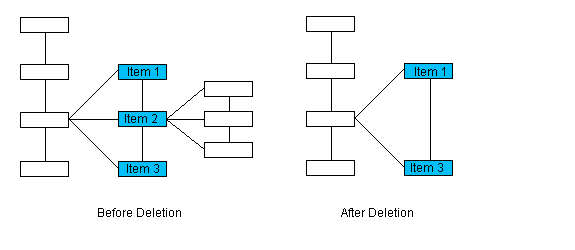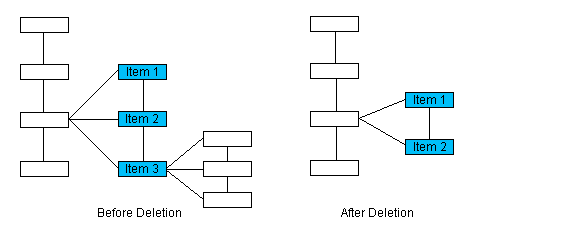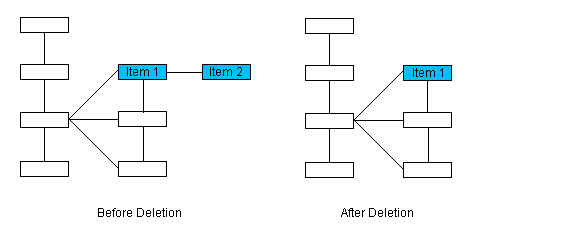| Leadtools.Dicom Namespace > DicomDataSet Class : DeleteElement Method |
public DicomElement DeleteElement( DicomElement element )
'Declaration Public Function DeleteElement( _ ByVal element As DicomElement _ ) As DicomElement
'Usage Dim instance As DicomDataSet Dim element As DicomElement Dim value As DicomElement value = instance.DeleteElement(element)
public DicomElement DeleteElement( DicomElement element )
public DicomElement deleteElement(DicomElement element)
function Leadtools.Dicom.DicomDataSet.DeleteElement( element )
public: DicomElement^ DeleteElement( DicomElement^ element )
Since the Data Set is stored internally as a tree, the deletion must be carried out as a tree.
When deleting an item from the tree, if the item being deleted has a sibling (same level, same parent), following it, the object returned by the method points to this sibling. If the item being deleted does not have a sibling following it, but has a sibling preceding it, the returned object points to the preceding sibling. If the item being deleted is an only child, the returned object points to the parent. If there is no parent, the method returns a null reference (Nothing in Visual Basic). Below are illustrations of these situations.
For the sake of these illustrations, the order of siblings is top to bottom. A preceding sibling is drawn above the sibling it precedes, a following sibling is drawn below the sibling it follows.
Please note that the numbering of the items of interest is arbitrary, and does not imply order.
In this illustration, item 2 will be deleted. Since it has a following sibling, the returned object will point to item 3.

In this illustration, item 3 will be deleted. Since it does not have a following sibling, but does have a preceding sibling, the returned object will point to item 2.

In this illustration, item 2 will be deleted. Since it is an only child, the returned object will point to the parent, item 1.

In this illustration, item 1 will be deleted. Since it has no siblings and no parent, this method will return a null reference (Nothing in Visual Basic).

DicomDataSet Class
DicomDataSet Members
Reset Method
GetFirstElement Method
GetLastElement Method
GetPreviousElement Method
GetNextElement Method
GetRootElement Method
GetParentElement Method
GetChildElement Method
FindFirstElement Method
FindLastElement Method
FindPreviousElement Method
FindNextElement Method
FindModule Method
FindModuleByIndex Method
InsertModule Method